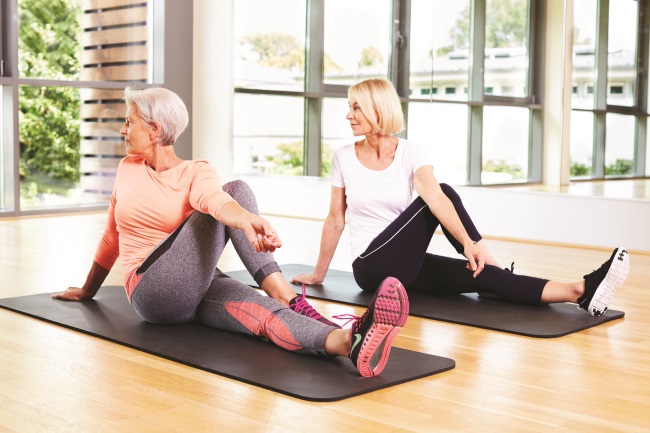Matthew Lunn, group wellbeing manager for Aspria, looks at how we should perform through the decades.
How does your fitness rank against that of others your age – and are you doing enough exercise to boost your odds of living a long and healthy life?
Could an extremely fit 60-year-old outperform a less conditioned 30-year-old in a sporting challenge? The answer: conceivably yes. There will always be exceptions to break any rule.
However, in general we accept that what we can expect of our bodies will naturally decline as we age. This is in part down to genetics, in part down to environmental factors, and in part down to how well we’ve looked after ourselves up to that point – our exercise habits, eating habits, alcohol consumption, stress levels, amount of sleep and so on.
All that said, given the huge impact physical activity has on our long-term mental and physical health, it’s important that we don’t simply shrug our shoulders and resign ourselves to a dramatic decline in our fitness levels as soon as we pass a certain age. Indeed, whether you’re 20 or 70 years old, the recommendation remains that you should aim to be active every day.
But just how fit should we be at any given age if we want to maximize our chances of good health – and how do we measure this?
Measuring your own fitness levels
Most of us will have some idea of how fit we are. But knowing the specifics can help us set realistic fitness goals, monitor our progress and maintain our motivation. Once we know our starting point, we can plan where we want to go. Below are some simple assessments we can all do.
Aerobic fitness can be tested during/after activity or at rest.
At rest, you simply check your pulse either on your wrist or neck: for most adults, a healthy resting heart rate is 60 to 100 beats per minute (BPM).
There are several options for assessing your fitness while active. For example, you can stop to check your heart rate (pulse) periodically during an aerobic workout, or just after a brisk walk if you don’t exercise regularly. You should be aiming for 50–75% of the maximum heart rate for your age, which translates to 93–138 BPM for those aged 35+, 88-131 BPM aged 45+, 83–123 BPM aged 55+ and 78–116 aged 65+. If you’re falling short of this, you need to gradually increase the intensity of your exercise.
Alternatively, go on a 1.5-mile run and see how long it takes you. As an example, a woman aged 45–54 should be aiming for 14 minutes and a man of the same age 12 minutes – these results would denote good levels of fitness.
Strength and flexibility are also key measures, and there are a number of tests to assess these. Strength can be measured using sit-up and press-up tests, for example, while the ‘sit and reach’ test measures the flexibility of the back of your legs, hips and lower back.
Your Aspria team can advise you on all of these tests, helping you understand your current fitness levels and identify where you could make improvements –but as an example, if you’re a woman aged 45-54 and can do 14 press-ups without stopping for a rest, or 25 sit-ups, this would be a good result. Men of the same age should be aiming for 16 press-ups or 35 sit-ups.







